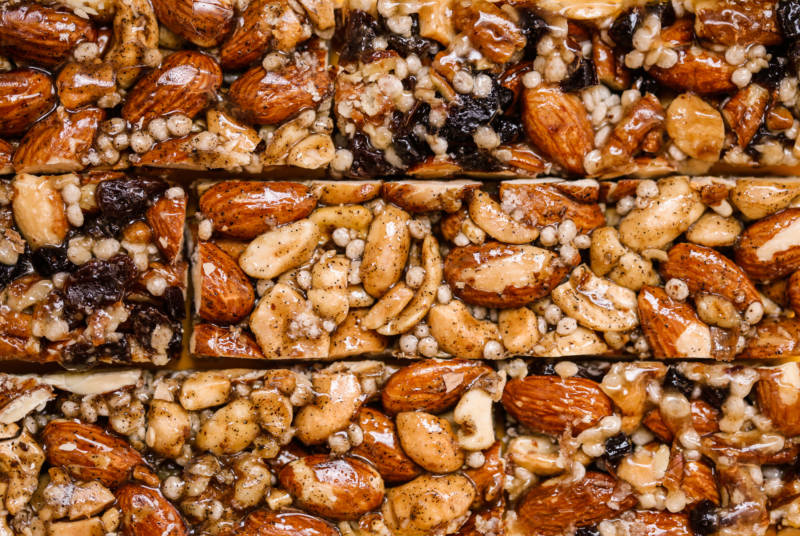Listen to the story on Morning Edition:
FDA Is Redefining The Term 'Healthy' On Food Labels

FDA Is Redefining The Term 'Healthy' On Food Labels
So, you're looking for a quick grab-and-go snack, and there's a row of energy bars at the checkout counter. Are they a healthy option?
The maker of Kind bars thinks so. The company has used the phrase "healthy and tasty" on some of its products that contain lots of nuts. But, here's the issue: The bars contained too much fat to meet the Food and Drug Administration's strict low-fat definition of healthy. So, as we reported last May, the company helped launch a petition to challenge the status quo.
Now the FDA has begun the process of redefining the term "healthy" on food labels. Policymakers are looking for input from food makers, health experts and the public. You can weigh in with your ideas about what factors and criteria should be used for the new definition. (Submit electronic comments directly to the FDA).
"As our understanding about nutrition has evolved, we need to make sure the definition for the 'healthy' labeling claim stays up to date," writes Douglas Balentine, who directs the Office of Nutrition and Food Labeling at the FDA's Center for Food Safety and Applied Nutrition.
So, how has nutrition science — and the thinking about what's healthful — evolved?
Let's start with fat. The fat-free era has come and gone. "The most recent public health recommendations now focus on type of fat, rather than amount of fat," Balentine writes in a blog post for the FDA.
For instance, the type of fats found in avocados and nuts are considered healthful fats. We're encouraged to eat more plant-based fats and omega-3s from fatty fish, whereas the U.S. Dietary Guidelines recommend limiting saturated fats — the type of fat found in meat and other animal products — to less than 10 percent of your total daily calorie intake.
The modernized definition of "healthy" will also likely address sugar content. The FDA is taking into account all of the newer evidence linking excessive sugar intake to heart disease and obesity.
"Our thinking about sugars has changed," Balentine told us, "so I would think the amount of sugar in products is something we [will] take into account."
In an ideal world, people wouldn't need labels to signal which food choices are healthful. As nutrition guru Marion Nestle of New York University, tells us, "if people want to eat healthfully, we know how to do that. That's eating lots of fruits, vegetables and whole grains." And she says we should eat packaged and processed foods in much smaller amounts.
"I don't think we should have health claims [on food packages] at all," Nestle tells us. "They're inherently misleading," because food companies use them as a marketing tool.
But the FDA's Douglas Balentine pushes back, pointing out that Americans are looking for information on food packages to help them make better decisions.
"The typical consumer makes a purchase decision in three to five seconds. They don't have a lot of time," Balentine says. So, he says, an up-to-date "healthy" label will give people a quick way to identify better-for-you options. "We want to give consumers the best tools and information about the foods they choose."
Copyright 2016 NPR.
